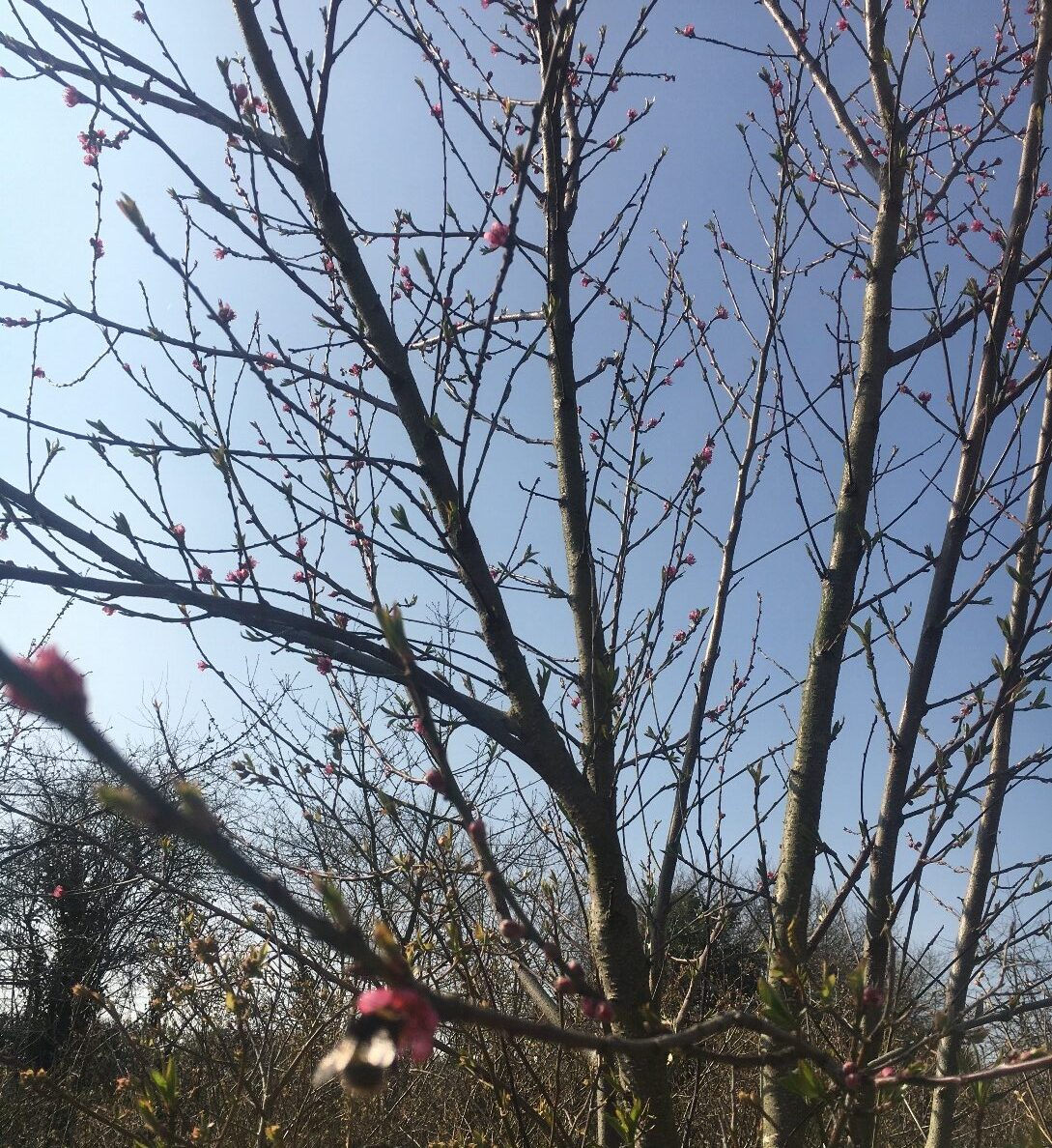Prunus persica
Peach, nectarine trees
Species Tolerances
- Drought Tolerance: Medium
- Shade Tolerance: No
- Waterlogging Tolerance: Low
- Frost Tolerance (trees from warmer climates may be frost tolerant, but their flowers may not be): Yes
- RHS Hardiness: H4
- Optimum Conditions for Growth:
Full sun on loamy soils which are not too acid or alkaline, moist but free-draining, and can be fan-grown along south-facing walls, or free-standing in the milder south of the British Isles. Suitable for orchard style planting with a perimeter of larger trees around them for shelter protection. The blossom is very susceptible to frost damage, so is becoming suitable to grow in the south of the British Isles. - Susceptibility to Pest/Disease:
Squirrels are partial to the fruit. May be susceptible to honey fungus

Prunus persica Peach in flower with bumblebee/ Bee Happy Plants & Seeds
Service to Pollinators
- Summary of Service to Pollinators:
Extra-floral nectaries producing more nectar, found either side of the leaf stalk where the petiole meets the leaf blade, as well as honeydew when aphids are active, of value to all pollinators. As the climate warms, more nectar will be produced then it will significantly contribute to building up all bee colonies. - Nectar Value to Pollinators: 3 (of 0-3)
- Honeydew Value to Pollinators: 1 (of 0-3)
- Pollen Value to Bees: 3 (of 0-3)
- Flowering Period: April
Risks
- Human Toxicity: Toxic
- Livestock Toxicity: Toxic
- Invasive Risk: No
- Suckering: No
Products
- Edible Fruit: Yes
- Edible Leaves: No
- Edible Sap: No
- Edible Seeds: No
- Honey, major source in UK: Yes
- For any medicinal potential, see 'Further Details' below.
- Timber: No
- Livestock Fodder: No
- Other Products:
Utility
- Nitrogen Fixation: No
- Organic Matter Accumulation: Yes
- Phytoremediation: Insufficient Data
- Deacidification: Insufficient Data
- Windbreak: No
- Soil Erosion Control: Yes
- Shade or Shelter: Yes
- Plant Support: Yes
- Integrated Pest Management: Insufficient Data
- Wildlife Value: Yes
- Wildlife Value Summary:
Mildly good for biodiversity referring to invertebrate diversity feeding on the tree, especially insects. Honeydew also produced when aphids active, producing more nectar for many insects. Fruit are available to a large range of birds and mammals. - Graduated Nativeness Classification ⓘ: 2 (of 1-10)1. Historic Native
2. Historic Introduction
9. Neutral Introduction
Further Details
The species has a chilling requirement that will only be satisfied in a temperate climate or at altitude. The tree is hardy to around minus 25°C, but in late winter the forming flower buds can only withstand to minus 15°C, for fruiting the following in summer. Spring frost can also be a risk to flower buds which appear in late March to April, buds withstanding down to minus 6°C, while open flowers can only withstand to minus 4°C. Summer heat is also required for fruit to ripen sufficiently to pick at between 20 – 30°C. Fruit needs to be picked just before it is ripe while still green, and it will continue to ripen after picking. If left on the tree to ripen, it will either drop or be eaten by squirrels.